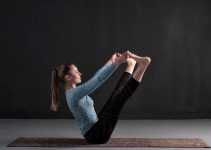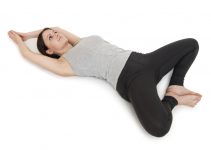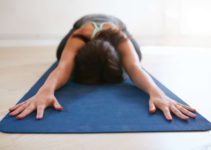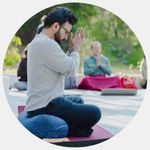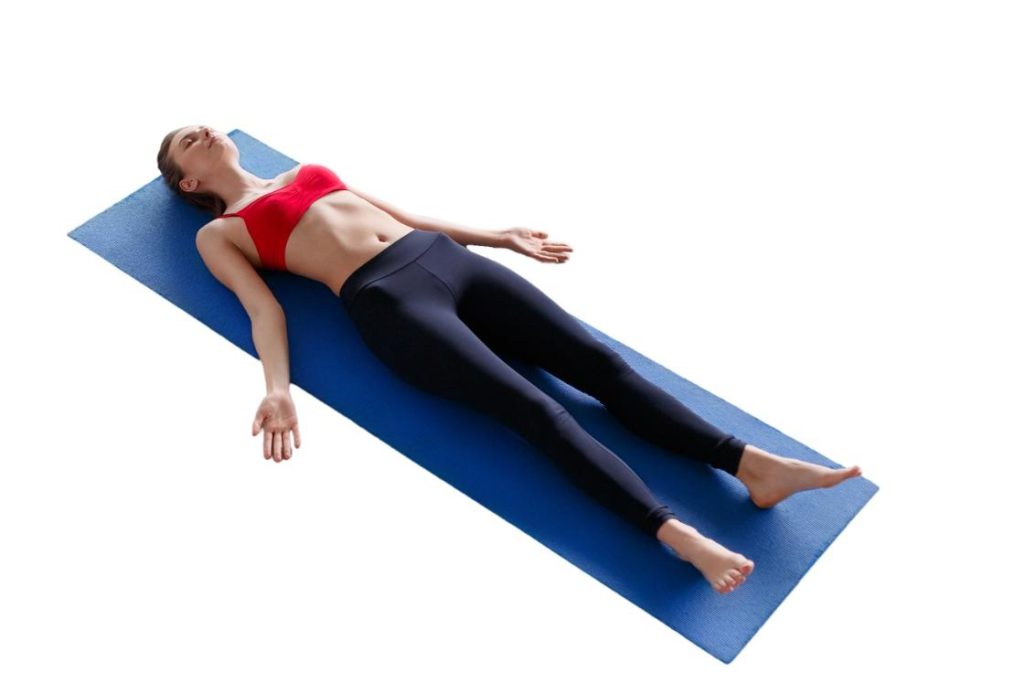
Shavasana (Corpse Pose) is a relaxing yoga posture usually done at the end of a yoga session. In this pose, you lie flat on your back with your arms and legs comfortably apart, allowing the whole body to rest completely.
Though it looks simple, Shavasana requires awareness and stillness. It helps release tension from the muscles, slow down the breath, and calm the mind. This pose gives the body a chance to absorb the effects of your yoga practice, making you feel refreshed and balanced.
Practising Shavasana regularly reduces stress, relaxes the nervous system, and helps restore energy after physical or mental effort.
Meaning and significance
The word Shavasana comes from Sanskrit, where “Shava” means corpse and “Asana” means pose. In this posture, the body remains completely still, like a motionless body, which is why it is called the Corpse Pose or Mritasana.
The stillness in Shavasana symbolises deep rest and surrender. It teaches you to let go of tension and distractions, helping the mind stay calm and aware. By imitating the stillness of a corpse, one experiences complete relaxation of the body and clarity of the mind.
This pose is often practised at the end of a yoga session to release physical strain and to allow the body and mind to absorb the benefits of the entire practice.
Practice guide of shavasana
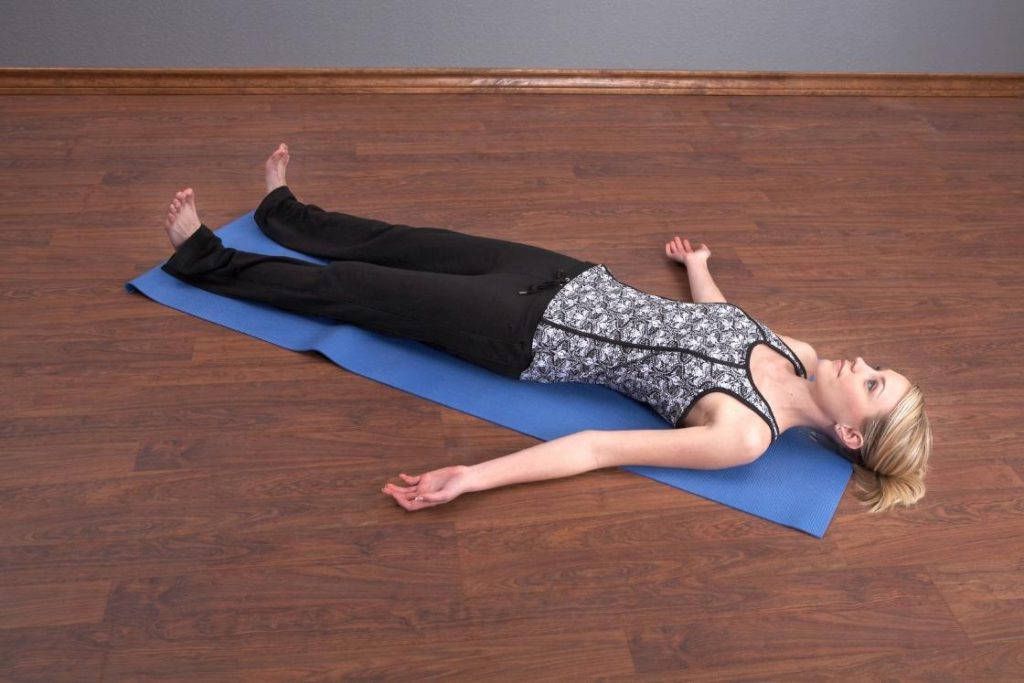
Precautions & contraindication
- While Shavasana is one of the safest yoga poses, a few simple precautions can make your practice more comfortable and effective.
- Avoid this pose if you have a recent back or spinal injury. You can place a folded blanket under your knees to reduce pressure on the lower back.
- People with pregnancy or breathing discomfort should practise this pose by lying on the left side instead of flat on the back.
- Those with low blood pressure should come out of the pose slowly to avoid dizziness.
- Always practise Shavasana in a quiet place where you won’t be disturbed.
- Do not force your body to stay still. Allow it to relax naturally.
- Keep your breathing soft and rhythmic — avoid holding your breath.
- If your mind starts to wander, gently bring your attention back to your breath or body awareness.
- It’s best to practise Shavasana after completing your yoga session or anytime you need rest and mental clarity.
Preparatory poses
Shavasana is usually performed after dynamic yogic postures like sun salutation after each yogic session. Pranayama is also usually performed before Shavasana.
Join Our Live 6-Day Yoga Nidra Workshop
How to do shavasana(corpse pose)
- Lie down on your back in a comfortable position on your yoga mat.
- Place your arms about 15 cm away from your body, with palms facing upward and fingers naturally curled.
- Straighten your legs and let your feet fall slightly apart, allowing the hips to relax.
- Close your eyes gently and take a few slow, deep breaths.
- Relax each part of your body, starting with the right foot, moving up through the right leg, then the left leg, and gradually to the head.
- Breathe deeply and evenly, letting go of any tightness or effort.
- Stay completely still, keeping your awareness on the natural rhythm of your breath.
- Remain in this pose for 10 to 20 minutes, allowing your body to rest and your mind to settle.
- To come out, bring awareness back to your body and surroundings.
- Roll gently onto your left side and rest there for a few moments.
- Press your right hand into the floor and slowly sit up in a comfortable seated position.
- Keep your eyes closed for a few breaths, then open them slowly when ready.
Follow-up Pose
Props and modifications
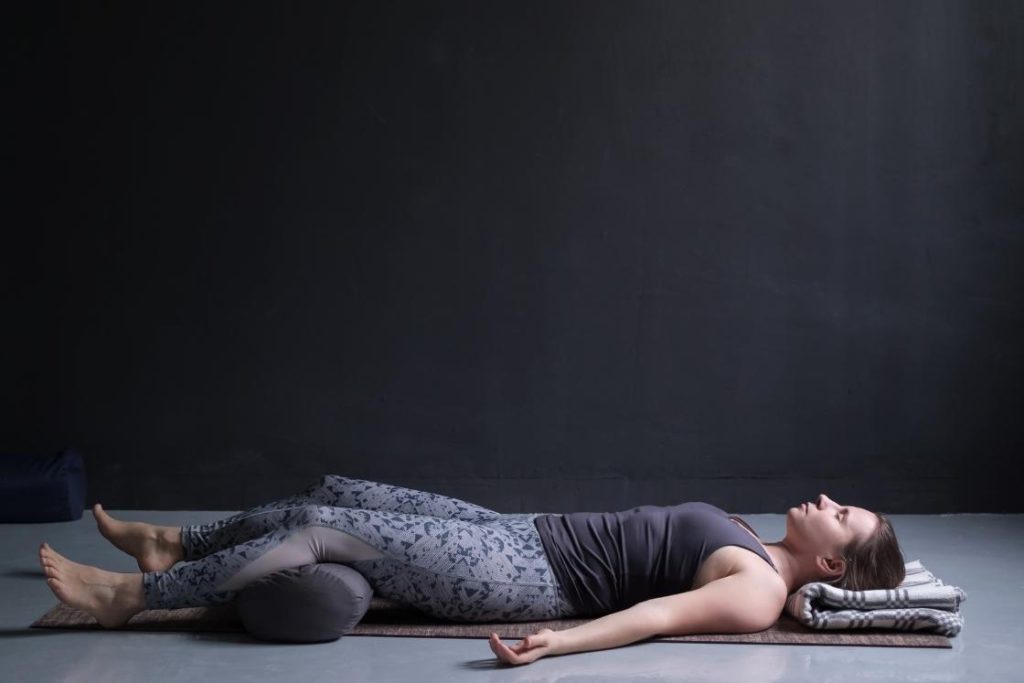
- Pillow/ blanket – Place a pillow or folded blanket under your head. This will bring the head aligned with the body. This will ease any discomfort while holding the posture.
- Bolster – Keeping your head over the folded blanket roll a bolster behind your knees. This will support the knee and relaxes the back even more in Shavasana.
- Chair – Lie down on your back keeping the knees bent and foot on the floor. Place a chair in front of your feet. Raise your legs off the ground. Put them calves and heels resting on the chair. This provides more relaxation to the legs in an inverted position.
- Pillows for side-lying Shavasana – Lie on your side on the floor keeping a pillow under your head. Place a pillow between your legs and between your forearms. The hands are joined together beyond the arm pillow.
Variations
- Savasana variation bent legs – Lie down on your back keeping the legs bent on knees. The feet touch the ground and arms lying by your sides with palms facing up.
- Savasana variation Arms Up – After coming to a supine position with straight legs slightly separated. Inhale and extend your hands overhead with palms facing up.
- Savasana Hands Bent on the Side Variation – Lie on your back, bring your arms by your sides. From there bending your elbows bring your hands to your shoulder level with palms facing up.
- Advasana – Lie on your stomach and raise arms overhead with palms facing the floor. Bring your forehead to the floor and relax the body.
- One more variation of Shavasana could be performed lying on your stomach. Bring your hands to the front keeping the elbows flexed outwards. Rest your forehead over the hands and relax focusing on your breath
Shavasana(corpse pose) benefits
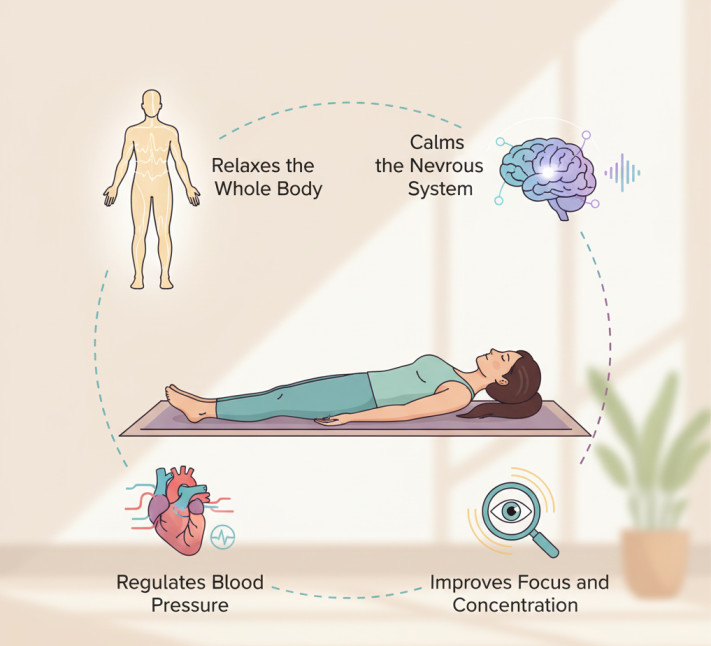
Regular practice of Shavasana offers deep physical and mental relaxation. It helps the body recover after yoga or any intense activity and prepares the mind for meditation. Here are the main benefits:
1. Relaxes the whole body
Shavasana helps every muscle in the body relax completely. By staying still and focusing on your breath, it releases physical tension and brings fresh oxygen to the muscles. This deep rest leaves the body refreshed and free from tiredness.
2. Calm the nervous system
Lying with a straight and relaxed spine allows the nervous system to settle. The slow and steady breathing in this pose reduces stress hormones and brings a feeling of calm. It can also help relieve anxiety, mild depression, and insomnia.
3. Helps regulate blood pressure
By releasing tension from the body and quieting the mind, Shavasana helps lower high blood pressure. It eases strain on the heart and supports better blood circulation, making it beneficial for overall heart health.
4. Improves focus and concentration
During Shavasana, awareness moves slowly through different parts of the body. This mindful attention trains the mind to stay present and focused, improving memory, clarity, and mental alertness over time.
5. Restores energy levels
If you feel tired, practising Shavasana for a few minutes can quickly restore your energy. It allows the body to recharge, improving productivity and reducing both physical and mental fatigue.
Conclusion
Shavasana (Corpse Pose) is more than just lying still; it is a moment of complete rest for both body and mind. This pose allows the body to recover, the breath to slow down, and the mind to become calm and aware.
Practising Shavasana at the end of every yoga session helps the body absorb all the benefits of the practice. It reduces stress, restores energy, and leaves you feeling peaceful and balanced. Even a few minutes of Shavasana each day can bring deep relaxation and mental clarity.
FAQs about shavasana (corpse pose)
1. Why is Shavasana done at the end of a yoga session?
Shavasana is done at the end of yoga to help the body rest and absorb the benefits of all poses. It calms the mind, slows the breath, and allows complete relaxation.
2. How long should you stay in Shavasana?
You can stay in Shavasana for 5 to 20 minutes, depending on your time and comfort. Even a few minutes of stillness can relax the body and refresh the mind.
3. Can beginners do Shavasana?
Yes, Shavasana is suitable for beginners. It’s easy to perform and helps build awareness of the body and breath.
4. What is the best time to practise Shavasana?
Shavasana can be practised at the end of a yoga session, after exercise, or before sleep. It helps release stress and prepares the body for deep rest.
5. Can I do Shavasana after eating?
It’s best to wait at least 2 hours after eating before practising Shavasana. Doing it on a full stomach can make you feel uncomfortable or sleepy.
6. What should I focus on during Shavasana?
Focus on your breath and the feeling of relaxation spreading through your body. If your mind wanders, gently bring your attention back to your breath.
7. Who should avoid Shavasana?
People with severe back pain, pregnancy (especially in later months), or breathing discomfort should avoid lying flat on the back. They can modify the pose by lying on the left side or using support under the knees.
